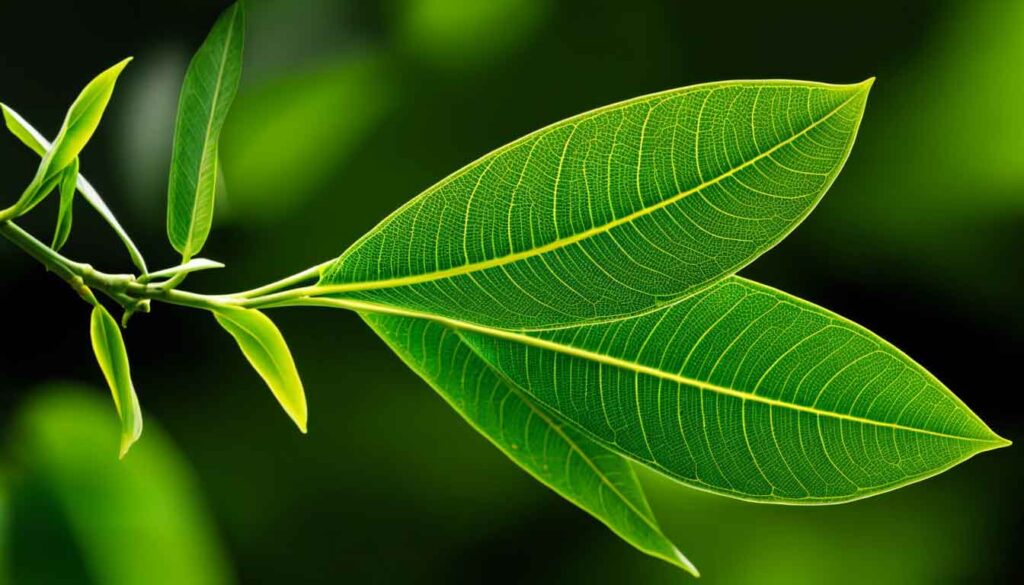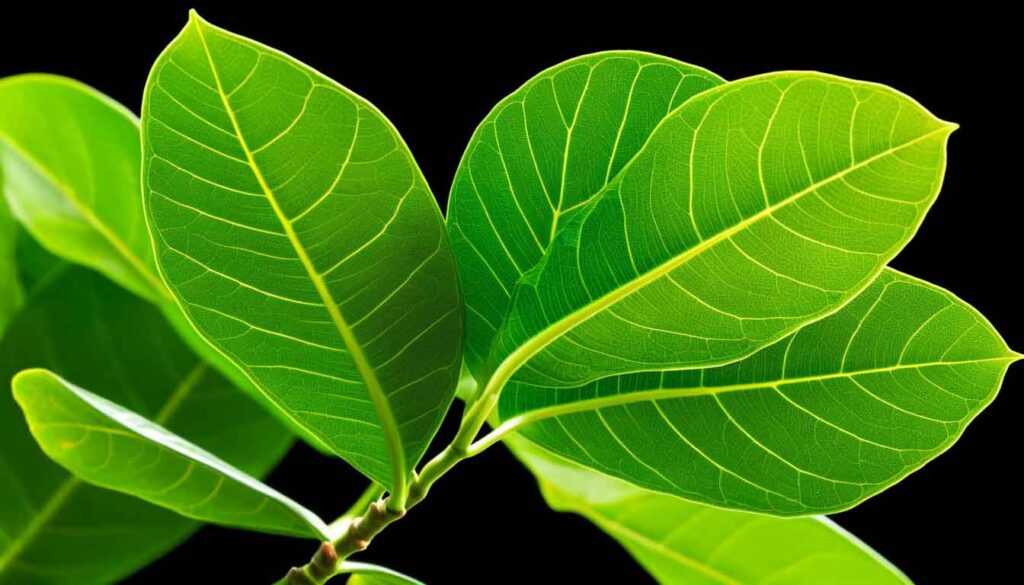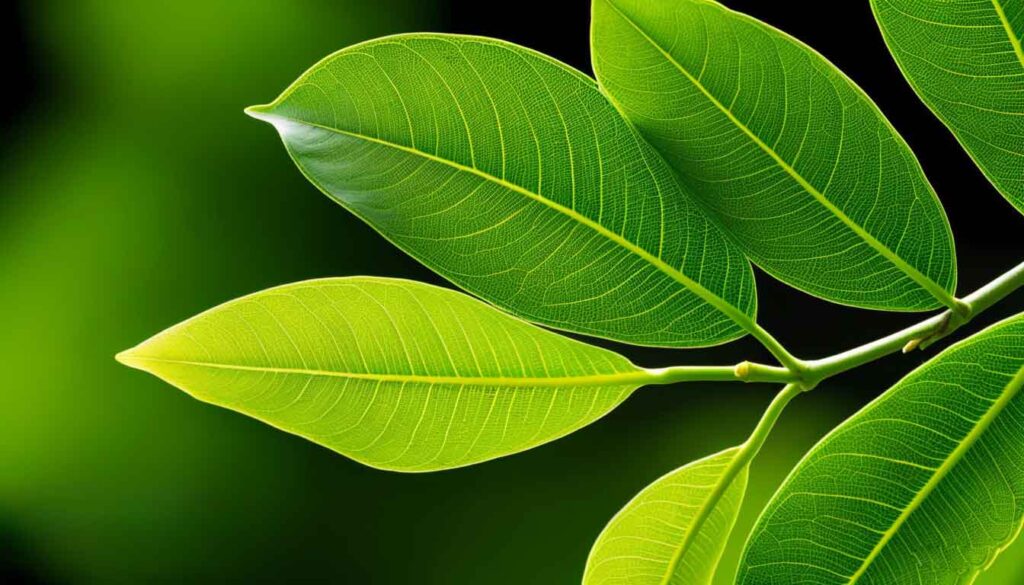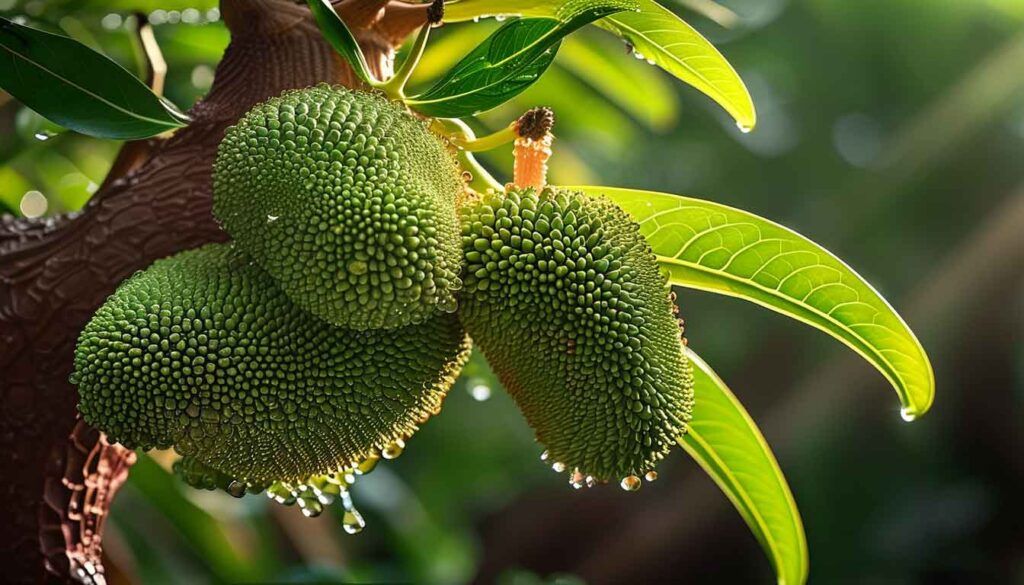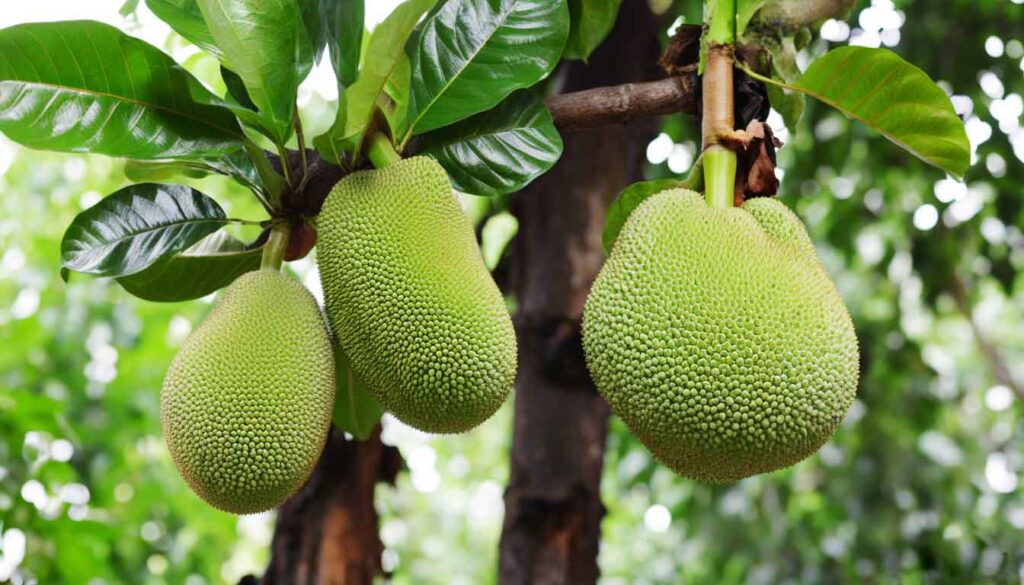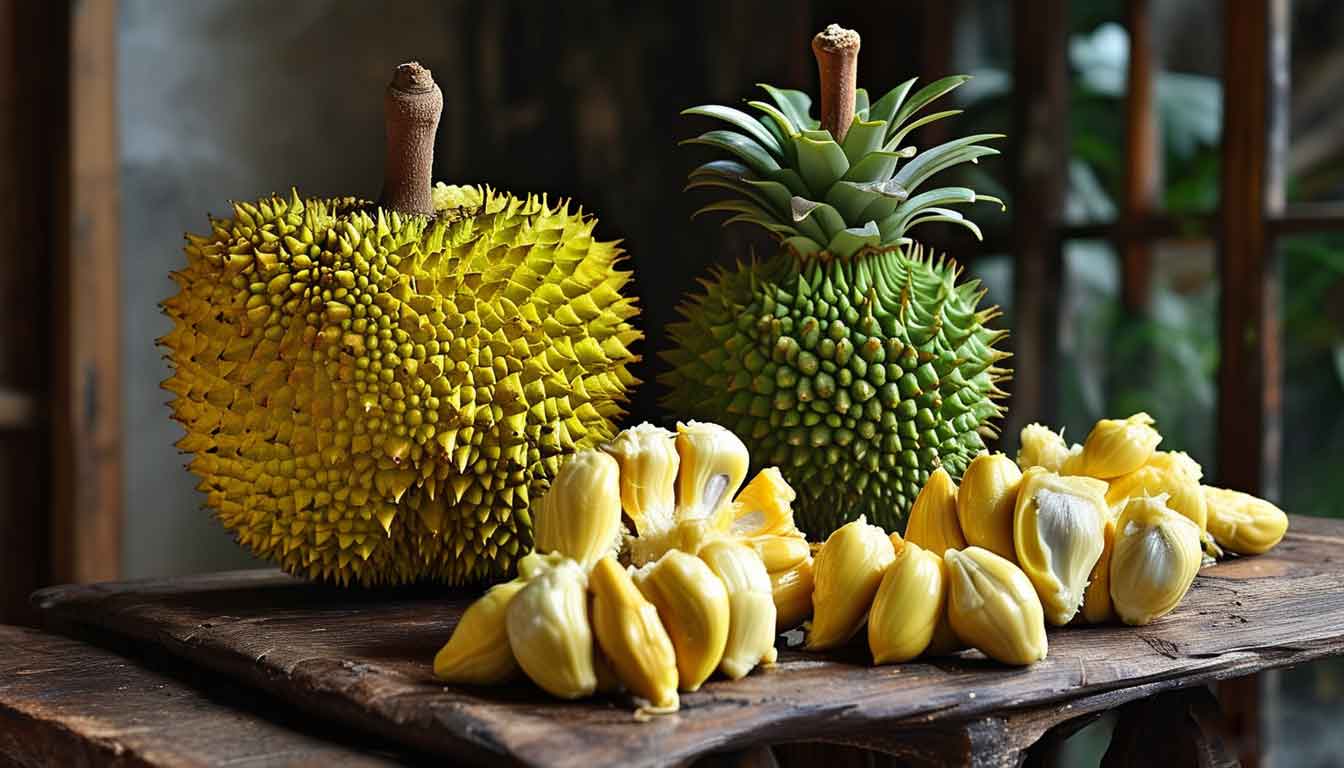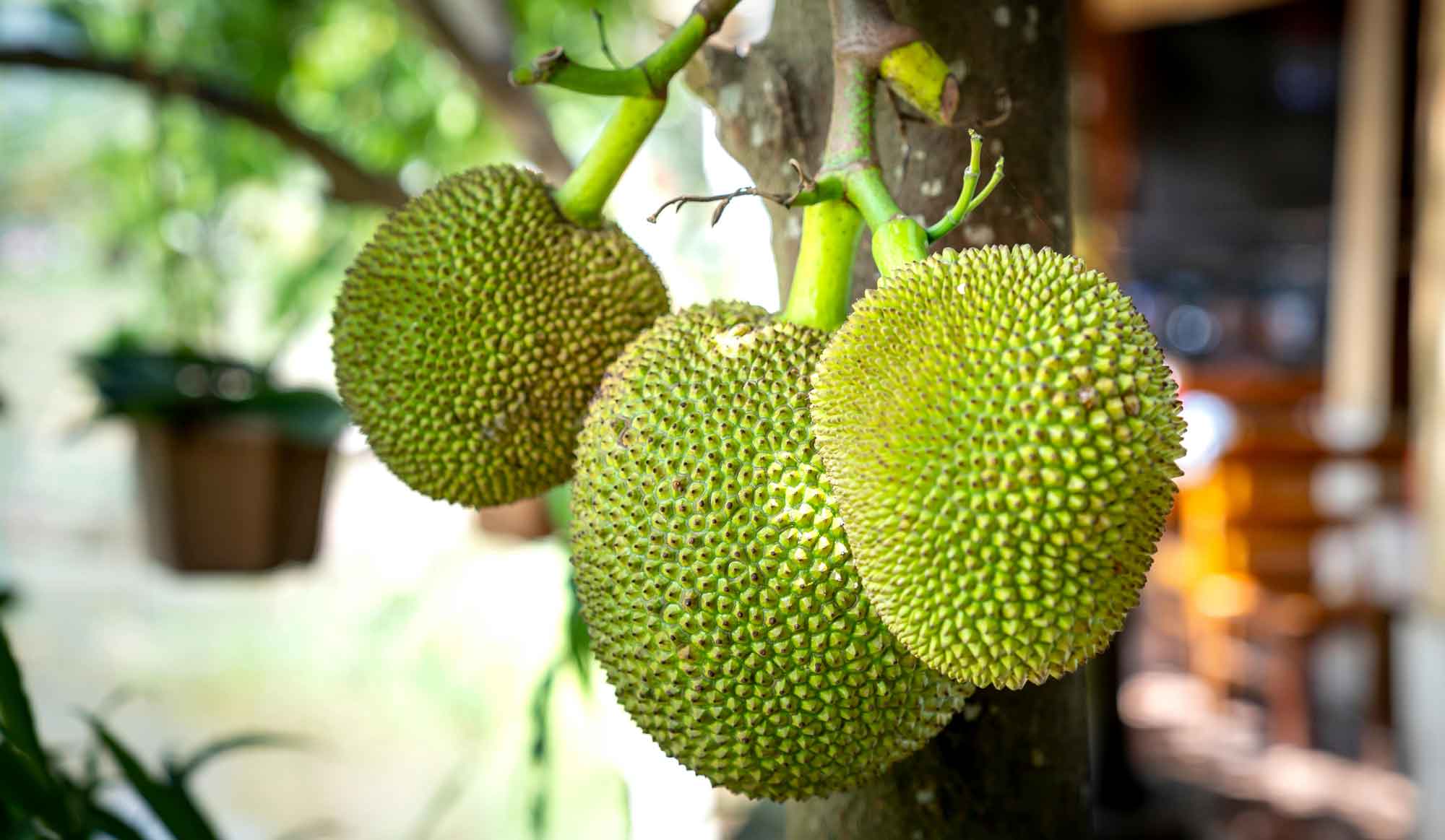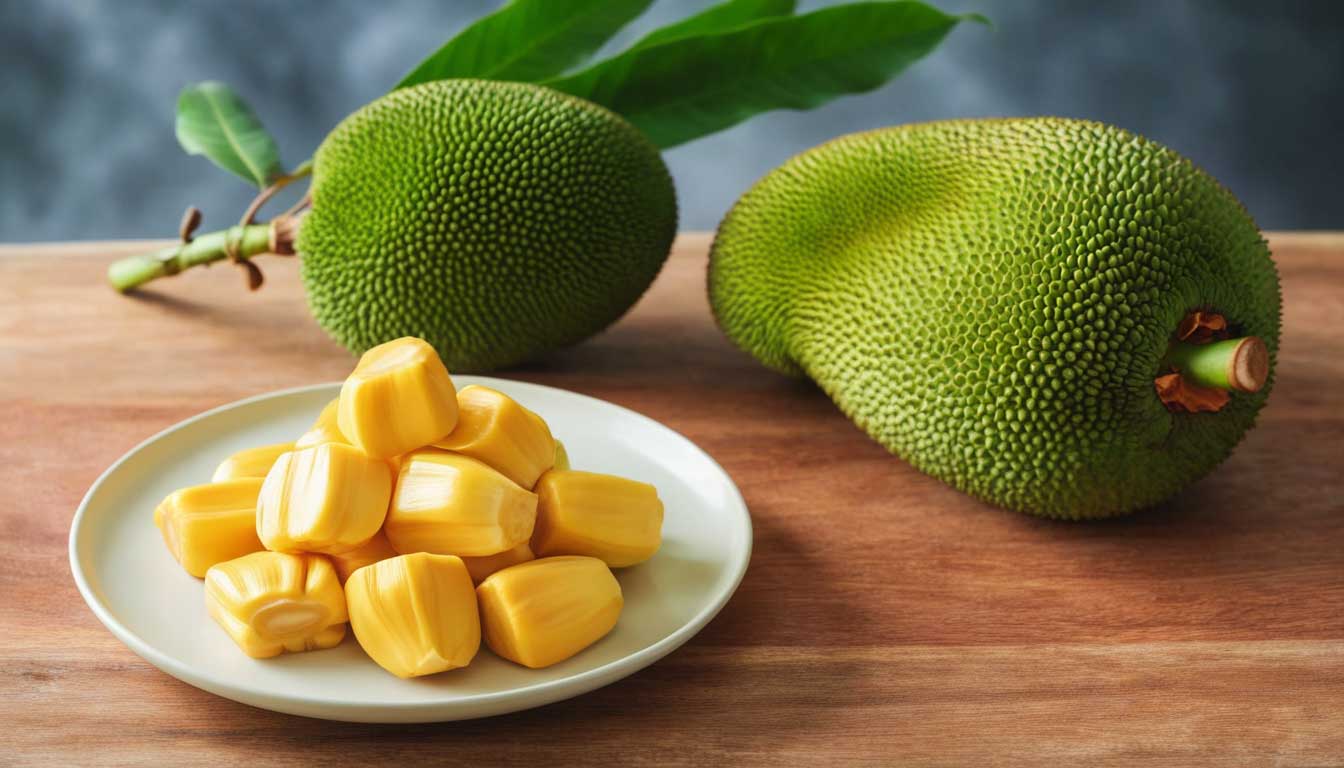Everything You Need to Know About Jackfruit Leaf:
The jackfruit leaf is an often-overlooked part of the Artocarpus heterophyllus tree, but it comes with a range of surprising benefits. Known for its rich medicinal properties and culinary uses, the jackfruit leaf is gaining popularity worldwide, especially in the USA. In this article, we will explore everything about jackfruit leaves – from their scientific name to their unique shape, benefits, and uses.

What is Jackfruit Leaf? | Jackfruit Leaf Name and Scientific Name
The jackfruit leaf comes from the jackfruit tree, which is scientifically known as Artocarpus heterophyllus. This tree is native to South Asia but is widely cultivated in tropical and subtropical regions around the world. In English, it is simply called “jackfruit leaf,” but it is also known by various names in different languages. For example, in Hindi, it is referred to as “Kathal Ke Patte,” while in Tamil, it’s called “Palaikkai Ilai.”
Jackfruit Leaf Shape and Characteristics
The jackfruit leaf has a distinct, glossy, dark green appearance, which makes it easy to identify. The leaves are long, elliptical in shape, and can grow up to 6 to 10 inches in length. They have a smooth surface with a slight leathery texture and are arranged alternately on the branches of the tree. The younger leaves of the jackfruit tree are a lighter shade of green and become darker and more rigid as they mature.
One of the most striking features of the jackfruit leaf is its venation. The venation of jackfruit leaf is pinnate, meaning there is a single central vein from which smaller veins radiate outward. This distinctive feature plays a key role in its identification.
Benefits of Jackfruit Leaf | Health and Medicinal Uses
Jackfruit leaves are known for their impressive health benefits. Used for centuries in traditional medicine, these leaves are considered a potent natural remedy for various ailments. Some key jackfruit leaf benefits include:
- Anti-inflammatory Properties: Jackfruit leaves have been traditionally used to reduce inflammation. The presence of certain compounds like flavonoids and polyphenols helps to ease symptoms of inflammation in the body.
- Diabetes Management: Studies suggest that jackfruit leaves can help regulate blood sugar levels, making them beneficial for individuals with type 2 diabetes. Consuming jackfruit leaf tea or extracts is believed to promote insulin sensitivity.
- Rich in Antioxidants: The leaves are packed with antioxidants, which help protect the body from free radicals, supporting overall health and preventing chronic diseases.
- Improved Digestion: Consuming jackfruit leaves in various forms, such as tea, can aid in digestion. The leaves have been shown to help relieve constipation and other digestive issues.
- Detoxifying the Body: Jackfruit leaves are also said to act as a natural detoxifier, cleansing the body of harmful toxins and promoting better kidney function.
No related posts found.
Culinary Uses of Jackfruit Leaf
In addition to its medicinal properties, the jackfruit leaf has several culinary uses, particularly in traditional cuisines of Southeast Asia and India. One of the most unique uses of jackfruit leaves is in the preparation of food like jackfruit leaf idli. The leaves are used as a natural wrap to steam rice cakes, enhancing the flavor and aroma of the dish.
Furthermore, in countries like India, jackfruit leaves are also used in cooking to wrap food items for steaming. This method imparts a subtle flavor and retains the food’s moisture, making it more nutritious.
Jackfruit Leaf Spot Causal Organism | Diseases of Jackfruit Leaves
Like many other plants, the jackfruit tree is susceptible to certain diseases. One of the common issues faced by the tree is jackfruit leaf spot, a condition caused by a fungal organism known as Phyllosticta artocarpicola. This disease leads to dark, irregular spots on the leaves, and if not treated, it can lead to premature leaf drop, affecting the overall health of the tree.
Other common jackfruit leaf diseases include leaf blight, rust, and powdery mildew. It is important for farmers and gardeners to monitor the health of the tree and apply proper fungicides or natural treatments to manage these issues.
How to Identify Jackfruit Leaf
For those looking to identify jackfruit leaves, here’s a basic guide to the distinctive features:
- Shape: The jackfruit leaf is large, elliptical, and pointed at the tip.
- Color: It is a dark green color, with smooth, leathery texture on the surface.
- Venation: The leaf has a prominent central vein with smaller lateral veins branching out, characteristic of pinnate venation.
- Size: Jackfruit leaves can grow to be quite large, around 6-10 inches in length.
A simple jackfruit leaf drawing can help you visualize these unique characteristics. It’s a great tool for anyone trying to identify jackfruit leaves in the wild or in a garden setting.
Jackfruit Leaf in India | Cultural and Medicinal Importance
In India, jackfruit leaf has both cultural and medicinal significance. It is used in various traditional practices, particularly in Ayurvedic medicine, where the leaves are believed to have cooling properties. The leaves are often used in rituals and ceremonies and are a common sight in many Indian households. They are also used in the preparation of dishes like idli and puzhungal (fermented rice), where the leaves are placed at the bottom of cooking vessels to enhance the taste.
Additionally, in rural parts of India, jackfruit leaves are used for making eco-friendly products like plates, bowls, and other items due to their large size and durable nature.
Conclusion: The Versatility of Jackfruit Leaf
The jackfruit leaf is more than just a part of the jackfruit tree – it’s a powerful, versatile natural resource. From its numerous health benefits to its culinary uses and role in traditional medicine, jackfruit leaves offer a wealth of advantages. Whether you are looking to add a unique flavor to your dishes, manage your health better, or explore new eco-friendly alternatives, the jackfruit leaf is a valuable option worth considering.
By embracing this underutilized plant part, you can not only enhance your meals but also benefit from its medicinal properties, adding a touch of nature’s wisdom to your life.
FAQs About Jackfruit Leaf
-
Can jackfruit leaves help with diabetes?
Yes, jackfruit leaves are known to help regulate blood sugar levels, which makes them useful for individuals with type 2 diabetes.
-
Are jackfruit leaves edible?
Yes, jackfruit leaves are edible and are commonly used in traditional dishes, such as idlis, where they act as a natural steaming wrap.
-
What are the common diseases affecting jackfruit leaves?
The common diseases include jackfruit leaf spot caused by Phyllosticta artocarpicola, leaf blight, and rust.
-
How can jackfruit leaves be used in cooking?
Jackfruit leaves are often used to wrap food for steaming, adding flavor and moisture retention, or used in tea for medicinal purposes.
-
What are Jackfruit Leaves Used For?
Jackfruit leaves have many potential uses, especially for health. They contain natural compounds that might help control blood sugar levels after meals. Some people use jackfruit leaves to manage diabetes and promote wound healing, though there isn’t strong scientific evidence to confirm these benefits.
6. Can You Boil Jackfruit Leaves?
Yes, you can boil jackfruit leaves. If you want the leaves to sink in water faster, you can briefly boil them for 5-15 minutes. Typically, you would use one leaf for every 10-50 liters of water. Be careful not to add too many leaves at once.
7. How to Eat Jackfruit Leaves?
In some parts of the world, jackfruit leaves are cooked as a dry dish. In Kerala, for example, jackfruit leaves are often stir-fried and served with boiled green grams. They can also be used in other types of cooking depending on the local tradition.
8. How to Use Dried Jackfruit Leaves?
Dried jackfruit leaves can be used in a variety of ways. They are sometimes shredded and mixed into the soil for plants or used as leaf litter in animal enclosures. The leaves have natural antibacterial and antifungal properties, making them useful in these situations. For reptiles, jackfruit leaves can also provide good cover.
9. Are Jackfruit Leaves Good for Diabetes?
Yes, jackfruit leaves may help manage diabetes. They contain antioxidants that could lower inflammation, which is a common problem for people with diabetes. Some studies suggest that extracts from jackfruit leaves and stems can help reduce blood sugar levels. However, more research is needed to fully understand their effects.
By understanding the various aspects of the jackfruit leaf, you can unlock its full potential – from medicinal benefits to culinary possibilities, it’s a natural powerhouse you don’t want to overlook. If you have any medical problems are any kind problem please take a advice with professionals before use it.
